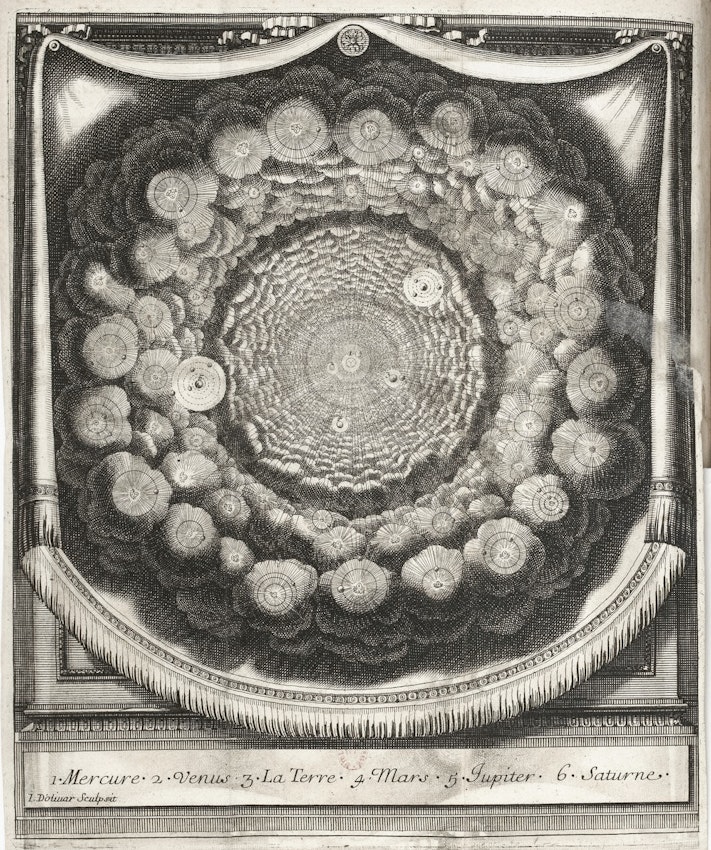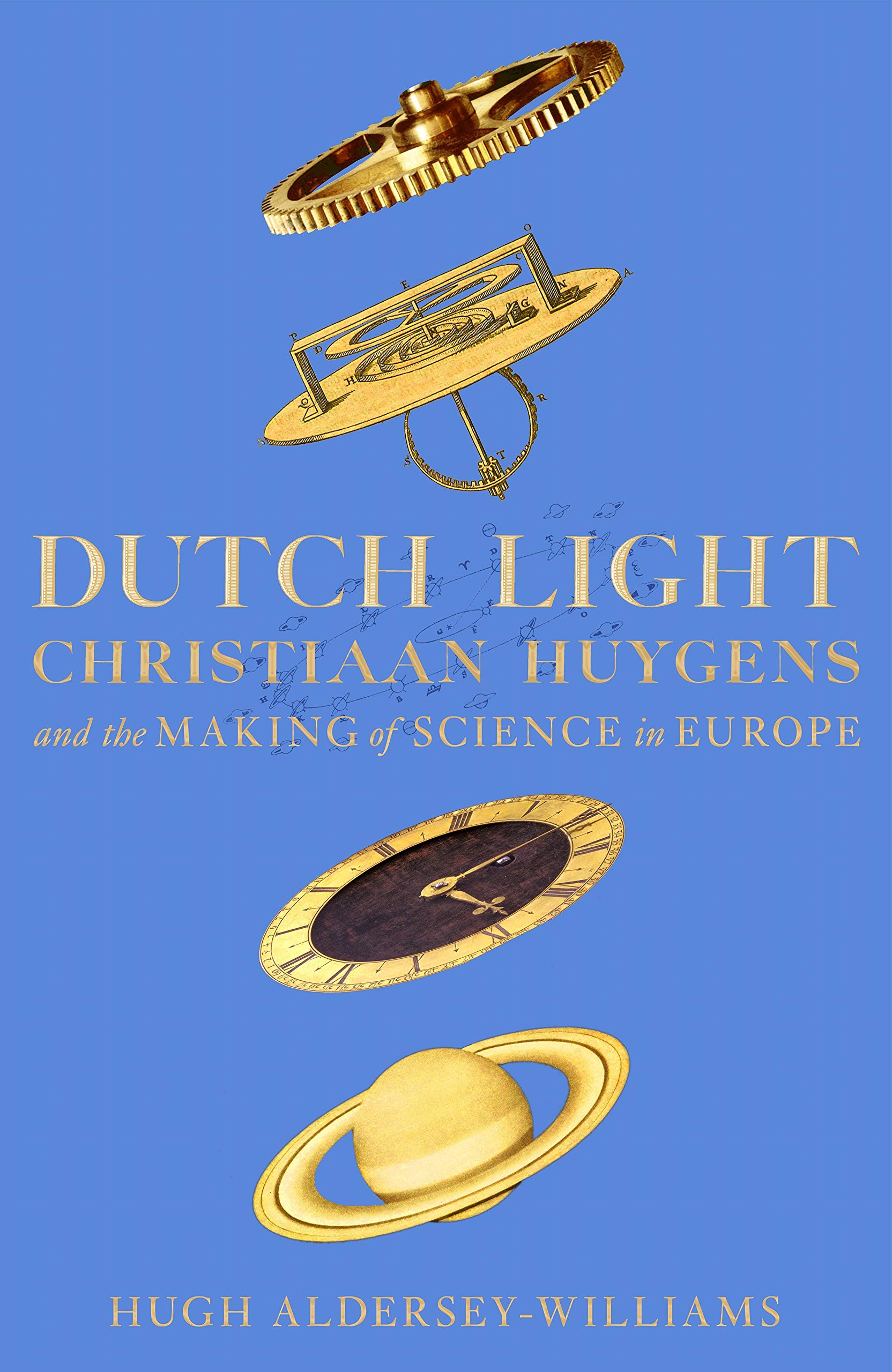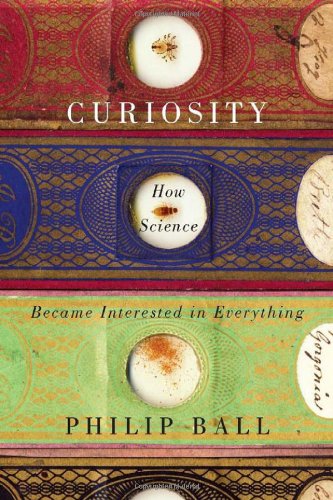The Uncertain Heavens Christiaan Huygens’ Ideas of Extraterrestrial Life
During the 17th century, as knowledge of the Universe and its contents increased, so did speculation about life on other planets. One such source, as Hugh Aldersey-Williams explores, was Dutch astronomer, mathematician, and inventor Christiaan Huygens, whose earlier work on probability paved the way for his very modern evaluation of what alien life might look like.
Published
October 21, 2020
Portrait of Christiaan Huygens by Caspar Netscher, 1671 — Source.
When things look bleak in this world, it is perhaps natural to turn one's mind to conditions on other worlds. This is what the Dutch astronomer Christiaan Huygens did in the late 1680s. He had been ejected from his influential post as a government scientist of Louis XIV in Paris and found himself isolated back home in the provincial town of The Hague, frequently ill with depression and fevers, and missing the companionship of his brother Constantijn, who was away serving as secretary to the Dutch King William III in England.
It was then that Huygens began to write Cosmotheoros, a book-length speculation on the possibility of life on other planets, and the first such work to be based on recent scientific knowledge rather than philosophical conjecture or religious argument. Fearful of censure by “those whose Ignorance or Zeal is too great”,1 Huygens instructed his brother to publish the work only after his death, which he did in 1698. Originally written in Latin, Cosmotheoros was quickly translated into Dutch and other languages. A lively English translation appeared that same year under the audacious title, The Celestial Worlds Discover’d.
Philosophers had of course always thought about the existence of life beyond the Earth. Aristotle ruled it out, believing that the Earth was unique and that other celestial bodies were pure geometrical entities. But the atomists, among them Democritus and Epicurus, accepted the notion of a plurality of worlds, somewhat on the analogy of particulate matter of various kinds existing with space in between. Medieval thinkers picked up on this debate, but could only add to it their own concerns about the implications of one view or another for church doctrine, which did nothing to advance it.
The revelation that there were yet more bodies in the solar system than the ones that had been known since antiquity, which came with Galileo's discovery of four moons of Jupiter in 1610, added an unexpected new dimension to the discussion. And when Huygens discovered the first satellite of another planet, Saturn, in 1655, the balance of the argument seemed to change again.
Diagram showing the orbiting moons of Earth, Jupiter, and Saturn from Huygens's The Celestial Worlds Discover'd (1722 English edition). As Huygen modestly notes “The outermost but one, and brightest of Saturn's, it chanc'd to be my lot... The rest we may thank the industrious Cassini” — Source.
Huygens achieved fame in the 1650s for that discovery of Saturn's first satellite (later named Titan) and the planet's ring (later seen to be rings) and as the creator of the first accurate pendulum clock. He also invented numerous other devices, including a “magic lantern”, a kind of primitive slide projector, and made important contributions to mathematics, especially the fields of geometry and probability, and introduced mathematical formulas as a means of expressing the relationship between quantities such as speed and mass in physics problems. All of these achievements make him the greatest scientist in the period between Galileo and Newton.
Christiaan Huygens was precocious in his fascination with the physical world. As a child, he made little machines and delighted in solving mathematical puzzles, such that people began to refer to him as the “Dutch Archimedes”.2 He rejected the life of a courtier and diplomat pursued by his father and brothers, and soon distinguished himself in physics, mathematics, and astronomy. After his breakthroughs with Saturn and clocks, his experiments with moving objects led him to the conclusion that all motion is only relative (which later earned the admiration of Einstein). In the 1670s, he devised a wave-based theory of light, which was substantially correct but was neglected for nearly 150 years until it could be confirmed by experiment.
Unlike some illustrious contemporaries, he maintained a systematic focus on his chosen problems and recognised the joint importance of their practical and theoretical aspects, rejoicing when these were shown to reinforce one another, as they did in his improvements to the pendulum. Although, like any natural philosopher of the seventeenth century, he worked on a range of problems that would seem hopelessly broad to a modern specialist, he did not — as Newton did — become sidetracked into alchemy, occultism, or religion.
Huygens was a true internationalist. He sought to adapt his improved pendulum clocks with the aim of being able to calculate longitude at sea in collaboration with Scottish inventors. He swapped ideas about the air pump used to investigate the properties of the vacuum with the Irish Robert Boyle. He found himself caught in an ugly dispute with the English Robert Hooke over the invention of the balance spring to regulate the timekeeping of portable watches. He compared telescope designs and planetary observations with the Polish Johannes Hevelius and the Italian Giovanni Domenico Cassini, among others. He tutored the young German philosopher Gottfried Leibniz in mathematics (before the student surpassed the master and invented calculus).
In 1663, Huygens became the first foreigner to be elected to the Royal Society. More significantly, he was instrumental in establishing the French Academy of Sciences around the same time, making him “the recognised leader of European science”,3 according to a biographer.
Huygens' discovery of Saturn's ring in 1656 demanded years of patient observation of the planet using a telescope of his own design (for which Christiaan and his brother Constantijn even ground the lenses themselves). During this time, the apparent shape of the planet changed, leading to many interpretations of its form. It was Huygens' powerful optics together with his mathematically informed sense of what was physically most likely that led him to the correct interpretation.
Diagram from Huygens' Systema Saturnium (1659) showing Saturn as it appeared to various previous observers — Source.
Diagram from Huygens' Systema Saturnium (1659) showing why the appearance of Saturn's ring changes as it orbits the sun — Source.
His first speculations about life on the planets date from this time. Writing about the ring in his treatise on Saturn, he nonchalantly added a line of wonder about “the effects that the ring that surrounds them must have on those who inhabit it”.4 From later letters of reminiscence to his brother, it appears that Christiaan freely discussed such matters with Constantijn while they were at the telescope together, even though it took another forty years for his thoughts to appear in print.
By that time, Cassini had discovered four moons of Saturn in addition to Huygens's Titan and the four “Medicean stars” that Galileo had detected in orbit around Jupiter in 1610. The solar system was beginning to look very different from that understood by the ancient Greeks, or even by astronomers of a generation or two before, such as Galileo or Johannes Kepler.
Although the atomists anticipated that there was a plurality of worlds both within the solar system and perhaps also beyond it, they were divided on the question of what these worlds were like. They accepted that some might be inhabited by living creatures of various kinds, while others might be devoid of any life and water. Pythagoras, for instance, believed that the moon was inhabited by animals larger and plants more beautiful than those on Earth, while others insisted it was barren.
Medieval scholars felt duty-bound to consider these matters in the context of God's creation. In 1318–9, William of Ockham gave lectures at Oxford stating his belief that “God could make another world better than this one and distinct in species from it”.5 But his ideas aroused such opposition that he was not granted his degree. A century later, Nicholas of Cusa went further in supposing that at least some species elsewhere would be superior to humans, but that nevertheless all owed their origin to “God, who is the centre and circumference of all stellar regions”.6
Two great revelations, both so vast in their implications that it took them more than a century to sink in, gave a new stimulus to these speculations in the sixteenth century. The first was Copernicus' heliocentric theory of the solar system, which demoted the Earth to a status equal with that of the other planets. The second was the European discovery of the Americas, which broadened ideas of the diversity of species that might be expected to be found on new worlds. These conceptual upheavals unleashed a popular new wave of imaginative literature about life on other worlds that depended neither on scholastic orthodoxies nor on up-to-the-minute astronomical observations.
The advent of the telescope brought a sharper focus to these conjectures. The discovery that the Moon was not a pure sphere, but marked by mountain ranges like the Earth, encouraged the cleric John Wilkins, for example, to infer that there would also be inhabitants there in The Discovery of a World in the Moone (1638).
One of a collection nine etchings, latter 18th century, by Italian artist Filippo Morghen depicting the lunar voyage described by John Wilkins. Here we see “Pumpkins used as dwellings to secure against wild beasts” — Source.
Kepler, too, believed that all manner of celestial bodies — planets, moons, and even suns — might have inhabitants, based on similar astronomical observations. He went further than previous authors by using his knowledge of physical laws (presumed to operate universally) to consider the form that these beings might take. On the Moon, they would have “by far a larger body and hardness of temperament than ours”,7 he wrote, because of the length of days and extremes of temperature.
In Somnium, a prototype science fiction novella (the title means “The Dream”) in which the protagonist is kidnapped by daemons and taken to the Moon, Kepler enlarged on the nature of the Moon's inhabitants, dividing them into two groups according to whether they lived on the dark side or the illuminated side. The latter naturally regard the Earth as their Moon, and Kepler gave a scientifically informed impression of how the Earth would look from its satellite. However, Somnium is not great reading, concerned as it is mainly with the comparison of orbital periods and other astronomical variables on the two celestial bodies.
Huygens' main stimulus to action was probably another work, by the writer Bernard le Bovier de Fontenelle, published in 1686. His wildly successful Entretiens sur la pluralité des mondes took the form of a dialogue between a naive marquise and a wise philosopher. Written in plain French so that it might appeal to those without any scientific knowledge, and specifically to women readers, it offered a primer to current astronomical theories, as well as an entertaining vision of life on the moon, planets, and stars beyond our solar system.
Illustration from Bernard de Fontenelle's Entretiens sur la pluralité des mondes (1686) — Source.
While not so artfully conceived as Fontenelle's work, Cosmotheoros is its match in literary terms, while also being, according to the science writer Philip Ball, the “first attempt to mount a rigorous scientific case for life on other worlds, without doing harm to Scripture”.8 Huygens' seriousness of intent is evident from the fact that he considered the work as just one volume in a never realised “book of the planets”. He wrote in Latin in order to appeal to an educated readership. (The fact that it was quickly translated into spoken languages shows that it reached well beyond this target audience.)
Part of Huygens' purpose was to refute the German Jesuit scholar Athanasius Kircher, who had published his own mystical dialogue of space travel, Itinerarium exstaticum, in 1656, which Huygens had read and found to omit all that he considered probable about other planets, while including “a company of idle unreasonable stuff”.9 Huygens had more time for other writers. He cited Nicholas of Cusa, Tycho Brahe, Giordano Bruno, and Johannes Kepler, although they, he felt, had ventured too little detail as to the forms that extraterrestrial life might take.
What Kircher lacked in scientific rigour he often made up for with absorbing visuals. Frontispiece to his Itinerarium exstaticum (1660) — Source.
Huygens made his argument by reasoning from probability. He began: “A Man that is of Copernicus's Opinion, that this Earth of ours is a Planet, carry'd round and enlighten'd by the Sun, like the rest of the Planets, cannot but sometimes think, that it's not improbable that the rest of the Planets have their Dress and Furniture, and perhaps their Inhabitants too.”10 The key phrase here is “not improbable”, harking back to Huygens' youthful investigations of statistical likelihoods. For, as he warned his readers: “I can”t pretend to assert any thing as positively true (for how is it possible) but only to advance a probable Guess, the truth of which every one is at his own liberty to examine.”11
He thought it most unlikely there was an atmosphere on the Moon, for instance, and so he ruled out the kind of life there imagined by Kepler and Wilkins. But he happily endorsed the idea of life on planets within our solar system and in the solar systems surrounding other stars. The discovery during his lifetime that the speed of light is finite encouraged him to go further and suggest that there may be stars so distant that their light has not yet reached us.
His thoughts about the likely nature of each planet were informed by what could be learned about them through a telescope. He argued that if one planet could be shown to be Earth-like, then it greatly increased the chances that others would be too — a logic that still guides the Search for Extraterrestrial Intelligence (SETI). By using what evidence he had of one planet's distinctiveness from another — in size, distance from the sun, length of days, and appearance — he was able to enrich the vision of extraterrestrial life he laid before his readers.
Huygens' tubeless aerial telescope, 1684 — Source.
Huygens' ideas about plants and animals were based on reasonable projections of what was then known to exist on the Earth, recently expanded by news of exotic species brought back to Europe by explorers' ships. Marvelling at the richness and fitness of species “so exactly adapted”12 to life on Earth, he argued that if we were to deny this abundance to other planets, then “we should sink them below the Earth in Beauty and Dignity; a Thing very unreasonable.”13
What form might this life take? Based on new information that American species are different, but enough like those of the Old World, Huygens presumed a general similarity with terrestrial species. But he did give some consideration to the different physical conditions that may prevail on other planets. The atmosphere might be thicker, for example, which would suit a greater variety of flying creatures. Gravity might be different, too, although he did not provide estimates of the comparative gravitational force on each of the planets, and in any case he rejected the notion of a simple correlation between the size of a planet and the scale of its flora and fauna. “We may have a Race of Pygmies about the bigness of Frogs and Mice, possess'd of the Planets,”14 he wrote, although he thought it unlikely.
For Huygens, though, “the main and most diverting Point of the Enquiry is . . . placing some Spectators in these new discoveries, to enjoy these Creatures we have planted them with, and to admire their Beauty and Variety”. Remarkably, he suggested that these intelligent observers might not be men, but other kinds of “Creatures endued with Reason”.15 Some planets, indeed, might be capable of accommodating several species of “rational Creatures possess'd of different degrees of Reason and Sense”.16
The nature of reason and morality would be the same as on Earth. These creatures would be social, and they would have houses to shelter them from the weather. Huygens struggled with their appearance, though. He wanted to indicate that they might not be humanoid, and yet, he said, surely they must have hands, and feet, and stand upright. But perhaps they would have exoskeletons, like lobsters, for example. After all, “”tis a very ridiculous opinion, that the common people have got among them, that it is impossible a rational Soul should dwell in any other shape than ours”.17 Such conjectures echoed those of Kepler in his Somnium, but were more soundly guided by Huygens' expert knowledge of the likely physical constraints.
Huygens then turned his attention to intelligence and technology. His planetary beings would surely have science, and especially astronomy, as this study was said to have arisen as a consequence of the fear of eclipses, which would also occur on other planets. They would doubtless have some of our inventions, “yet that they should have all of them is not credible”.18 In particular, Huygens could not credit that they would possess telescopes, since he considered those which he had used himself as being so fine that other intelligences would not be able to equal them. Instead, he invested the denizens of the planets with far superior natural eyesight.
Huygens' sketches of Death taking of his head, intended for projection with, what is perhaps his best known invention, the magic lantern, 1659 — Source.
In 1600, Giordano Bruno had been burnt at the stake in the Campo de” Fiori in Rome by the Inquisition for many heresies, including his insistence on the plurality of potentially inhabited worlds. A century later, Huygens was safe from such a fate. Nevertheless, he attempted to forestall any criticism from the church by making the semantic point that the heaven and earth referred to in scripture must apply to the totality of the universe and not to the planet Earth exclusively. He refused to grant man a special place in Creation. Unlike some rival works, especially those with a utopian or a satirical agenda, Cosmotheoros did not propose a hierarchy among the creatures in which humans would be either superior or inferior.
Cosmotheoros enjoyed a long period of popularity through the eighteenth century, and Huygens' ideas about life on the planets and in other solar systems became important for Immanuel Kant in his Universal Natural History and Theory of the Heavens of 1755. The discovery of Uranus by William Herschel in 1781 saw a further surge of interest, but thereafter astronomers began to shun the topic, and subsequent opinion has been less kind to this most speculative of Huygens' works.
Recently, though, Cosmotheoros has been reappraised by historians of science, who acknowledge that it was Huygens' embrace of uncertainty that gave him the licence to explore the topic in the first place. This was by no means a tendency shared by all in Huygens' time. Many thinkers, such as the English clergyman Joseph Glanvill, saw the acceptance of things not known for sure as the thin end of a wedge that would prise open a world of atheism. The Scottish poet William Drummond (in A Cypress Grove) explicitly singled out both Copernicanism and the idea of extraterrestrial life in this regard, as cases where “Sciences have become opinions, nay errors, and leave the imagination in a thousand labyrinths”.19
Nevertheless, it can now be seen that Huygens' greatest gift to later generations of scientists may have been his willingness to work with uncertainty. Having set out the mathematical foundations of probability, nobody was in a better position to extend its precepts into thinking about questions of science. Doing so was not a surrender to unreason, but a way of opening new doors to creative thought. As Huygens wrote in Cosmotheoros: “tis a Glory to arrive at Probability, and the search itself rewards the pains. But there are many degrees of Probable, some nearer Truth than others, in the determining of which lies the chief exercise of our Judgment.”
Hugh Aldersey-Williams is a writer and curator. He is the author of Dutch Light: Christiaan Huygens and the Making of Science in Europe (Picador, 2020), as well as a cultural history of the chemical elements, Periodic Tales (Penguin, 2011), and The Adventures of Sir Thomas Browne in the 21st Century (Granta, 2015).
Categories
Tags
Related Essays
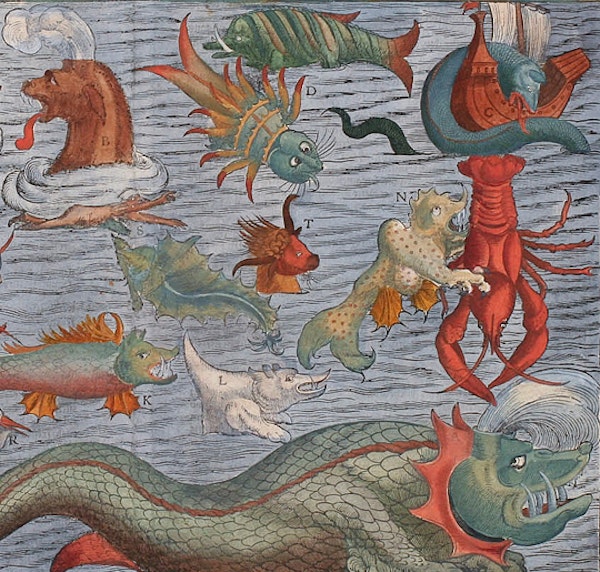
The terrifying Great Norway Serpent, or Sea Orm, is the most famous of the many influential sea monsters depicted and described by 16th-century ecclesiastic, cartographer, and historian Olaus Magnus. Joseph Nigg, author of Sea Monsters, explores the iconic and literary legacy of the controversial serpent from its beginnings in the medieval imagination to modern cryptozoology. more
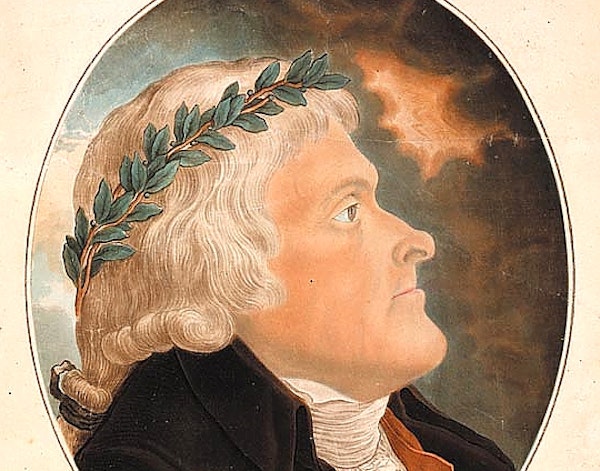
The Founding Fathers v. The Climate Change Skeptics
When claims from Europe accused British America of being inferior on account of its colder weather, Thomas Jefferson and his fellow Founding Fathers responded with patriotic zeal that their settlement was actually causing the climate to warm. Raphael Calel explores how, in contrast to today's common association of the U.S. with climate change skepticism, it was a very different story in the 18th century. more
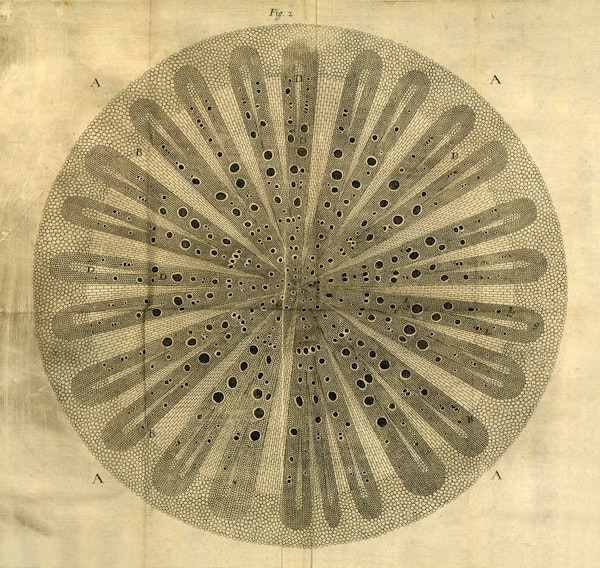
The Life and Work of Nehemiah Grew
In the 82 illustrated plates included in his 1680 book The Anatomy of Plants, the English botanist Nehemiah Grew revealed for the first time the inner structure and function of plants in all their splendorous intricacy. Brian Garret explores how Grew's pioneering "mechanist" vision in relation to the floral world paved the way for the science of plant anatomy. more
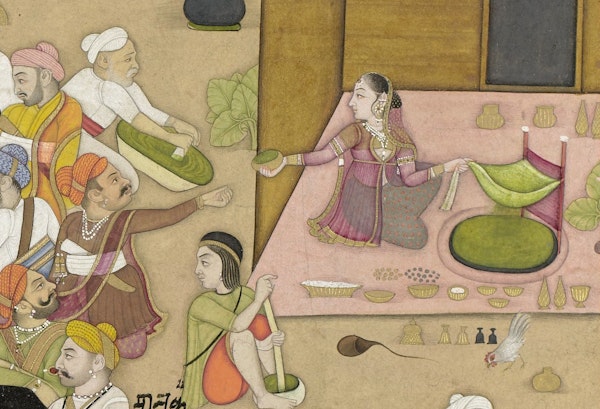
"Theire Soe Admirable Herbe": How the English Found Cannabis
In the 17th century, English travelers, merchants, and physicians were first introduced to cannabis, particularly in the form of bhang, an intoxicating edible which had been getting Indians high for millennia. Benjamin Breen charts the course of the drug from the streets of Machilipatnam to the scientific circles of London. more
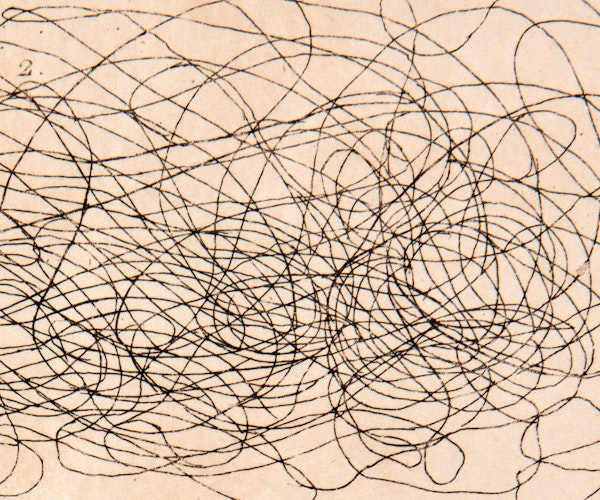
Visions of Algae in Eighteenth-Century Botany
Although not normally considered the most glamorous of Mother Nature's offerings, algae has found itself at the heart of many a key moment in the last few hundred years of botanical science. Ryan Feigenbaum traces the surprising history of one particular species — Conferva fontinalis — from the vials of Joseph Priestley's laboratory to its possible role as inspiration for Shelley's Frankenstein. more
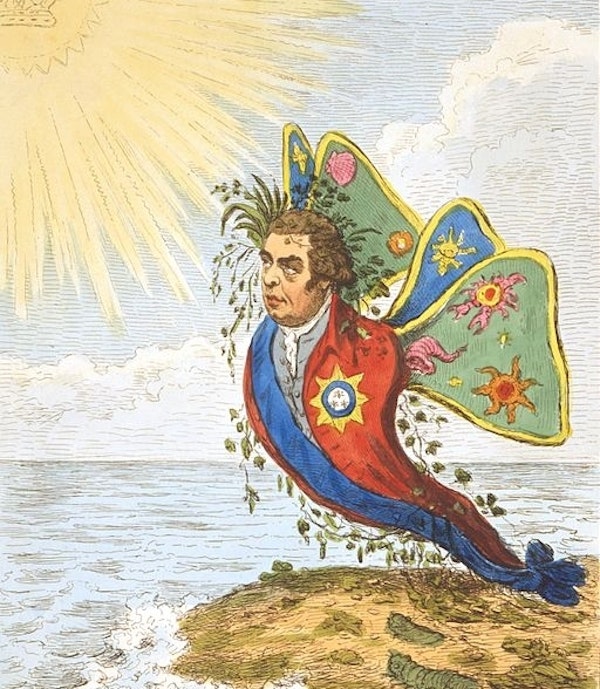
Joseph Banks: Portraits of a Placid Elephant
Patricia Fara traces the changing iconography of Joseph Banks, the English botanist who travelled on Captain Cook's first great voyage and went on to become President of the Royal Society and important patron for a whole host of significant developments in the natural sciences. more
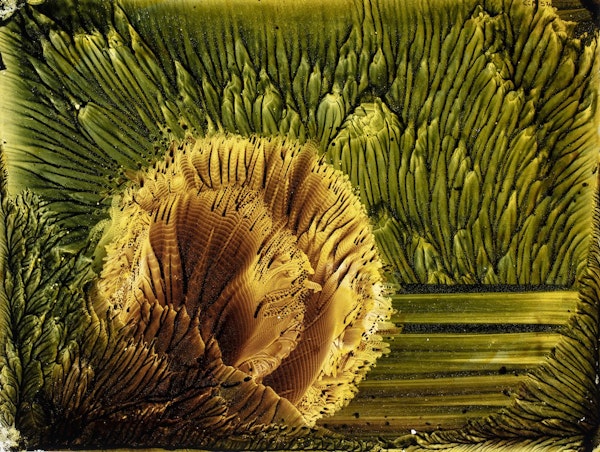
Picturing a Voice: Margaret Watts Hughes and the Eidophone
Of the various forms the nascent art of sound recording took in the late nineteenth century perhaps none was so aesthetically alluring as that invented by Margaret Watts Hughes. Rob Mullender-Ross explores the significance of the Welsh singer’s ingenious set of images, which until recently were thought to be lost. more
%3B_two_fruiting_bodie_Wellcome_V0043330+copy.jpg?w=600)
Fungi, Folklore, and Fairyland
From fairy-rings to Lewis Carroll's Alice, mushrooms have long been entwined with the supernatural in art and literature. What might this say about past knowledge of hallucinogenic fungi? Mike Jay looks at early reports of mushroom-induced trips and how one species in particular became established as a stock motif of Victorian fairyland. more
The majority of the digital copies featured are in the public domain or under an open license all over the world, however, some works may not be so in all jurisdictions. On each Collections post we’ve done our best to indicate which rights we think apply, so please do check and look into more detail where necessary, before reusing. Unless otherwise stated, our essays are published under a Creative Commons Attribution-ShareAlike 3.0 license. Strong Freedom in the Zone.





